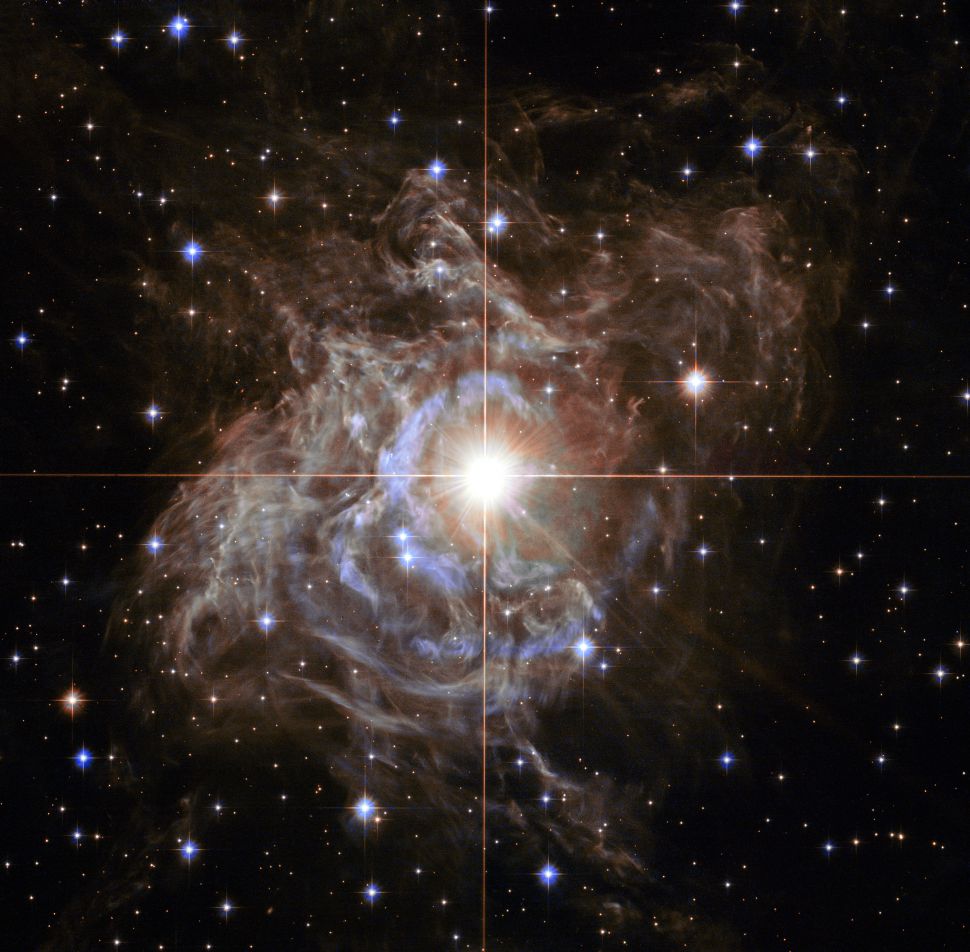
We’re getting something wrong about the universe.
A Hubble Space Telescope image shows RS Puppis, one of the brightest Cepheids visible in our galaxy. Astrophysicists use stars like this to calculate the expansion rate of the universe.(Image: © Hubble Space Telescope/NASA)
We’re getting something wrong about the universe.
It might be something small: a measurement issue that makes certain stars looks closer or farther away than they are, something astrophysicists could fix with a few tweaks to how they measure distances across space. It might be something big: an error — or series of errors — in cosmology, or our understanding of the universe’s origin and evolution. If that’s the case, our entire history of space and time may be messed up. But whatever the issue is, it’s making key observations of the universe disagree with each other: Measured one way, the universe appears to be expanding at a certain rate; measured another way, the universe appears to be expanding at a different rate. And, as a new paper shows, those discrepancies have gotten larger in recent years, even as the measurements have gotten more precise.
“We think that if our understanding of cosmology is correct, then all of these different measurements should be giving us the same answer,” said Katie Mack, a theoretical cosmologist at North Carolina State University (NCSU) and co-author of the new paper.
Related: From Big Bang to Present: Snapshots of Our Universe Through Time
The two most famous measurements work very differently from one another. The first relies on the Cosmic Microwave Background (CMB): the microwave radiation leftover from the first moments after the Big Bang. Cosmologists have built theoretical models of the entire history of the universe on a CMB foundation — models they’re very confident in, and that would require an all-new physics to break. And taken together, Mack said, they produce a reasonably precise number for the Hubble constant, or H0, which governs how fast the universe is currently expanding.
The second measurement uses supernovas and flashing stars in nearby galaxies, known as Cepheids. By gauging how far those galaxies are from our own, and how fast they’re moving away from us, astronomers have gotten what they believe is a very precise measurement of the Hubble constant. And that method offers a different H0.
“If we’re getting different answers that means that there’s something that we don’t know,” Mack told Live Science. “So this is really about not just understanding the current expansion rate of the universe — which is something we’re interested in — but understanding how the universe has evolved, how the expansion has evolved, and what space-time has been doing all this time.”
Weikang Lin, also a cosmologist at NCSU and lead author of the paper, said that to develop a full picture of the problem, the team decided to round up all the different ways of “constraining” H0 in one place. The paper has not yet been formally peer reviewed or published, and is available on the preprint server arXiv.
Here’s what “constraining” means: Measurements in physics rarely turn up exact answers. Instead, they put limits on the range of possible answers. And by looking at these constraints together, you can learn a lot about something you’re studying. Looking through one telescope, for example, you might learn that a point of light in space is either red, yellow or orange. Another might tell you it’s brighter than most other lights in space but less bright than the sun. Another might tell you it’s moving across the sky as fast a planet. None of those constraints would tell you much on their own, but taken together they suggest you’re looking at Mars.
Lin, Mack and their third co-author, NCSU graduate student Liqiang Hou, looked at the constraints on two constants: H0, and something called the “mass fraction” of the universe, denoted as Ωm, which tells you how much of the universe is energy, and how much is matter. Many measurements of H0 also constrain Ωm, Lin said, so it’s useful to look at them together.
